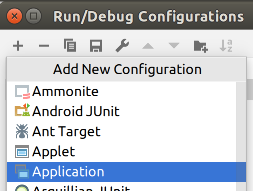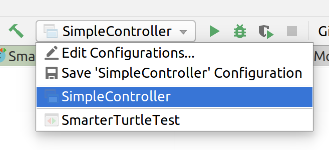Assignment 4: The Polymorphic Marble Solitaire
Due: Wed 10/17 at 9:00pm; self-evaluation due Thurs 10/18 at 10:00pm
Starter files: code.zip
1 Purpose
The benefits of the model-view-controller architecture shine when we need to add new features, by isolating relevant parts of our design and changing them independently. In this assignment we will see those benefits pay off by supporting other forms of Marble Solitaire. The goal of this assignment is to give you a chance to critically examine your earlier design choices, and either leverage or revise them to enable adding variations of this game with minimal change and duplication of code.
All new classes and interfaces for this homework should be in the
cs3500.marblesolitaire.model.hw04 package. All classes written in
previous assignments, even if improved upon, should remain in their respective
packages.
We are giving you a starter file whose sole purpose is to ensure your code is in the correct packages with the correct visibility.
2 Marble Solitaire with other shapes
As was observed in class earlier, there is nothing intrinsic about the board shape or size we’re using, and we can imagine the rules of this game being applied to boards of different sizes and shapes. The board that you implemented in Assignment 2 is known as English Peg Solitaire. In this assignment you will consider two more variations:
A European Peg Solitaire board is similar to an English board, except the corners between the arms of the cross are filled in to produce an octagon shape. The initial hole will again be in the center.
Perhaps a more interesting variant is Triangular Peg Solitaire. As its name suggests, the board for Triangular Peg Solitaire has pegs arranged in an equilateral triangle. A family of such games can be created by modifying the dimension of this board, in the form of the number of pegs in its bottom-most row. The following figure shows a 6-row Triangular Peg Solitaire version.

What sets this variant apart from the English and European versions is that the pegs are not arranged in a rectangular grid. We arbitrarily set a coordinate system to align with the board as shown in the figure above. Specifically, the pegs in row i (starting with row 0) can be indexed as (i,0) to (i,i). You may think of this as a pair of axes (like the rectangular grid) whose vertical axis is aligned with the left edge of the triangle (instead of vertical like that in the rectangular grid).
Like previous versions, this game also starts with a single empty slot whose
position can be customized. Marbles can move by jumping over one marble into an
empty slot, as before. Because the board is not rectilinear, the jump rules
change a bit. Each marble can jump to (a) positions in its own row two columns
away left or right; or (b) positions that are two rows above and below, along
the four diagonal directions. For example in the above figure the marble from
(5,3) can move to (5,1), (5,5), (3,1) and
(3,3), if those positions were empty and they could jump over a
marble. Similarly, the marble from (3,2) can move to (3,0),
(5,2) and (5,4) and (1,0). As before, the score is the
number of marbles on the board. The game ends when no more marbles can move,
and the game must be played to minimize the score.
3 Assignment Requirements and Design Constraints
Design classes implementing the European and Triangular variants of Marble Solitaire. (These are described in Section 4 and Section 5 below.)
Implement a
mainmethod to allow you to choose different board shapes from the command line, when running your program. (This is described in Section 6 below.)Test everything thoroughly: make sure the new models work properly, and that the controller can control them as well as it could the original model. You do not need to test your
mainmethod, though.
You must complete these requirements while respecting the following constraints:
You are not allowed to change the interface of the model (
MarbleSolitaireModel) at all from Assignment 2.You are not allowed to change the controller interface (
MarbleSolitaireController) at all from Assignment 3.You must create separate model implementations, without eliminating
MarbleSolitaireModelImplfrom Assignment 2. That is, models that represent all variations of the game must co-exist.
In this assignment it is important not only to have a correctly working model, but also a design that uses interfaces and classes appropriately. Make sure you minimize replication of code. You may refactor your earlier designs to do this. You may also have to change earlier implementations to remove bugs. This is OK, but must be properly documented and justified. Again, you are not allowed to change existing interfaces or add new public methods.
4 The EuropeanSolitaireModelImpl class
Design a class with the above name that implements the
MarbleSolitaireModel interface from earlier assignments. Besides
implementing all required methods, this class should offer the following
constructors:
A default constructor (no parameters) that creates an octagonal board whose sides have length 3, with the empty slot in the center of the board.
A constructor with a single parameter (the side length) that creates a game with the specified side length, and the empty slot in the center of the board.
A constructor with two parameters (row, col), to specify the initial position of the empty slot, in a board of default size 3.
A constructor with three parameters (side length, row, col), to specify the size of the board and the initial position of the empty slot.
The getGameState() method should create a string that represents the
game board, as before. Here is an example of the default board:
O O O
O O O O O
O O O O O O O
O O O _ O O O
O O O O O O O
O O O O O
O O O(As with prior homework, there are no trailing spaces after the last position on each row, and the game state does not end in a newline character.)
Strong hint: this model is very, very similar to the one you build in Assignment 2. Your code should take advantage of that fact. Use an abstract base class to factor out the common code between these two model implementations. Ideally, the only code that should remain in the concrete classes are the constructors themselves.
5 The TriangleSolitaireModelImpl class
Design a class with the above name that implements the
MarbleSolitaireModel interface from earlier assignments. Besides
implementing all required methods, this class should offer the following
constructors:
A default constructor (no parameters) that creates a 5-row game with the empty slot at (0,0).
A constructor with a single parameter (dimensions) that creates a game with the specified dimension (number of slots in the bottom-most row) and the empty slot at (0,0). This constructor should throw the
IllegalArgumentExceptionexception if the specified dimension is invalid (non-positive).A constructor with two parameters (row,col) that creates a 5-row game with the empty slot at the specified position. This constructor should throw the
IllegalArgumentExceptionexception if the specified position is invalid.A constructor with three parameters (dimensions,row,col) that creates a game with the specified dimension and an empty slot at the specified row and column. This constructor should throw the
IllegalArgumentExceptionexception if the specified dimension is invalid (non-positive) or the specified position is invalid.
The getGameState() method should create a string that represents the
game board, as before. Here is an illustrative example:
O
O O
O O _
O O O O
O O O O O
O O O O O O
O O O O O O O(As with prior homework, there are no trailing spaces after the last position on each row, and the game state does not end in a newline character.)
Hint: this board is somewhat different from the other two, because its coordinate system is not standard Cartesian coordinates. Moreover, the set of legal moves from a given coordinate is different (as described earlier). Still, there is much that is similar between these models. You can, and should try to, successfully have this model extend the abstract base class above.
6 The main() method
Add the following class to your project:
package cs3500.marblesolitaire;
public final class MarbleSolitaire {
public static void main(String[] args) {
// FILL IN HERE
}
}This main() method will be the entry point for your program. Your
program needs to take inputs as command-line arguments (available in your
program through the argument args above). Review the
documentation
for command-line arguments in a Java program.
Specifically:
You must pass one of
english,european, ortriangular. This argument will decide which board shape (and hence which model) you should use.You may optionally pass the two arguments
-size N, where N is a number, to specify the size of the board. If unspecified, you should use the default size for the chosen board shape.You may optionally pass the three arguments
-hole R C, where R and C are numbers, to specify the row and column of the initial hole in the same manner as players of the game enter move positions. If unspecified, you should use the default hole position for the chosen board shape.
The following are some examples of valid command lines, and their meanings:
english -size 6produces a plus-shaped board (as in homework 2) with arm-width of 6, and initial hole in the centertriangularproduces a triangle-shaped board (as in this assignment) with side-length 5, and initial hole at the toptriangular -size 4produces a triangle-shaped board (as in this assignment) with side-length 4, and initial hole at the topeuropean -hole 1 4produces an octagon-shaped board (as in this assignment) with side-length 3, and the initial hole in the middle of the lefttop edge.
This is not an exhaustive list; other command lines are possible.
These arguments will appear in the String[] args parameter to your
main method; you can use them however you need to, to configure your
models. For this assignment, you do not need to explicitly handle
invalid command lines (e.g. by producing an informative error message).
6.1 To actually run your program with command line arguments in IntelliJ IDEA:
Go to
Run > Edit configurations
Click the
+button in the upper left, and selectApplicationfrom the dropdown that appears.
Give the new configuration a name that you’ll remember (e.g. "English size 3").
In the
Main classtextbox, entercs3500.marblesolitaire.MarbleSolitaire– the fully-qualified name of the class with yourmainmethod.In the
Program argumentstextbox, enter the command line arguments you want to use for this configuration, e.g.english -size 3Leave everything else at their defaults, and click Ok.
You can repeat this process as many times as you want, to make as many run configurations as you need. Then to choose among them, use the dropdown menu next to the run icon in the toolbar:

and press Run.
7 Deliverables
Your
EuropeanSolitaireModelImplandTriangleSolitaireModelImplclasses, and any support classes neededYour controller and model classes and related interfaces from Assignment 2 and Assignment 3 (with as few changes to the classes as possible, and any changes fully explained in comments)
Your class with the
main()method.Tests for all models in one or more JUnit test classes. It is a good idea to include your earlier tests as well, for regression testing. We certainly will...
All new classes and interfaces for this homework should be in the
cs3500.marblesolitaire.model.hw04 package. All classes written in
previous assignments, even if improved upon, should be in their respective
packages.
8 Grading standards
For this assignment, you will be graded on
Whether you had to modify any previously written interfaces,
whether your code implements the specifications (functional correctness),
how well your code is structured to avoid duplication, improve readability, etc.
the clarity of your code,
the comprehensiveness of your test coverage, and
how well you follow the style guide.
Please submit your homework to https://handins.ccs.neu.edu/ by the above deadline. Then be sure to complete your self evaluation by its deadline.